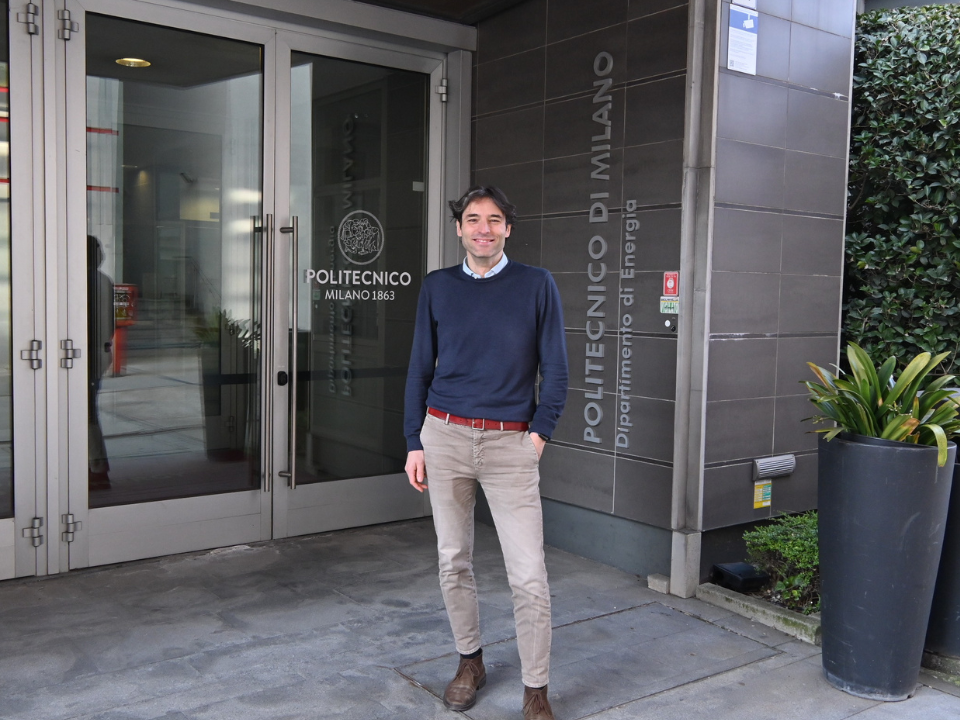
Engineering, chemistry, economics, diplomacy and project management. This is the recipe for DESOLINATION, the research project led by the Politecnico di Milano that brings together 21 academic and corporate partners from 13 different countries. An acronym for DEmonstration of concentrated SOLar power coupled wIth advaNced desAlinaTion system in the Gulf region, the project combines solar energy technologies and water desalination with the aim of obtaining drinking water in a sustainable way.
We discussed this with Giampaolo Manzolini, professor leading the research team coordinating the project.
How did DESOLINATION come about?
DESOLINATION was created five years ago as part of a European call for cooperation between European and Gulf countries. The aim was to develop an innovative desalination technology combined with Concentrated Solar Power (CSP) technology.
While the European partners focused on technology development, the Gulf countries were in charge of the demonstration stage, assessing the replicability of the solution and the social impact this technology can have.
Another aspect they dealt with was brine management.
What’s it all about?
When drinking water is produced from seawater, a waste element is also produced, which is hypersaline water(brine). This water must be properly managed and disposed of. Commercial technologies generally discard it into the sea at great distances from the production site.
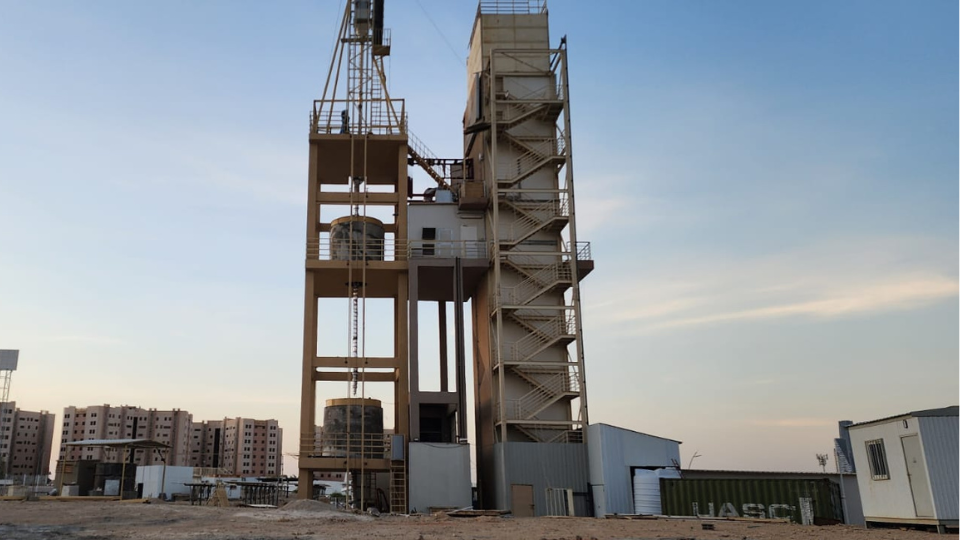
What are the innovative aspects compared to traditional desalination technologies?
Our project is working on solutions that significantly reduce the brine, so as to reduce the environmental impact.
The real innovation in our project lies in pairing a concentrating thermodynamic solar cycle with advanced desalination technologies.
Usually, solar energy is converted into heat and used in a steam cycle to produce electricity, while the residual heat feeds traditional desalination systems, such as multi-stage distillation.
In our case, we developed an innovative power cycle, which uses CO2 with special mixtures instead of traditional water vapour. This approach not only improves thermal efficiency, but also offers economic and performance advantages, especially when integrated with the desalination technologies we are developing, such as forward osmosis and membrane distillation. These solutions are particularly promising because they combine heat recovery in a more efficient way and enable a more sustainable water treatment.
You mentioned brine management, disposal of process waste. What solutions have you envisaged?
Brine management is a significant problem. In traditional systems, about 50 per cent of the water is recovered, while the remainder, highly concentrated in salts, is discarded.
We are adopting a multi-process cascade approach. After the first desalination stage, which recovers 50 per cent of the water, we move on to a second stage that recovers a further 30-35 per cent, and finally to a brine crystallisation system developed by Teesside University.
This process separates salts and metals, such as magnesium, calcium and, surprisingly, lithium, which, although present in low concentrations, can be extracted and used. Multiple separation steps imply higher energy and economic costs, so it is crucial that the recovered salts have a market value to make the process sustainable not only environmentally, but also economically.
Besides the coordination role, what significant contributions have come from the Politecnico di Milano?
The Politecnico di Milano plays a key role. It was our team that proposed the solar conversion technology and developed the plant diagram.
In particular, we focused on the power cycle, designing the use of innovative fluids and pairing with the desalination part. We are currently experimenting with the characterisation of these fluids for the first desalination stage, with the aim of optimising the process and improving overall performance.
Returning to the testing stage, where will the monitoring activities be carried out?
One of the partners was King Saud University to take advantage of an existing solar plant, which already collects and concentrates solar energy. In this system, heat is used to warm up the air, which then drives a turbine generating electricity. Usually, residual heat is dispersed into the environment, but in the demonstration stage of our project, we decided to recover it to feed the desalination system.
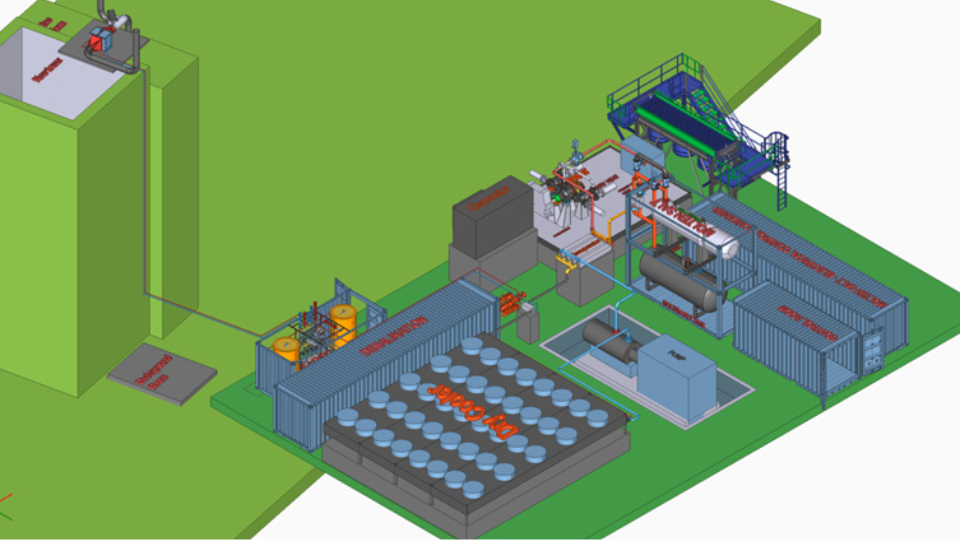
What parameters are you going to monitor to verify the actual functioning of the system?
The innovation we are implementing concerns the installation of a new receiver, which will allow us to connect the desalination system to the concentrated solar power generation plant. Our main area of study at this stage is the efficiency of heat recovery.
What we are going to measure is how much heat is actually recovered from the turbine in relation to the amount of water produced. We already have theoretical models and are testing these scenarios in the lab, but now we want to verify whether the results obtained in the lab can actually be seen in an operational plant.
One of the most complex aspects concerns the variability of heat conditions during the day, due to solar radiation and other climatic factors. This could affect the stability of the system, and one of the challenges will be to monitor the impact of these fluctuations on system operation.
Our goal is to start real testing in October, hoping that the first demonstrator will be up and running by then.
And what does the second stage involve?
The second stage of the project involves the installation of a new machine, the heart of our innovative power cycle. Unlike other plants, this equipment does not use steam, but an alternative cycle using residual heat to feed the desalination system.
At this stage, we will check whether the performance of this machine is in line with expectations. This machine is a first-of-a-kind, as it will be the first to be built and installed at this location.
The challenge for DESOLINATION is also to make this technology affordable for everyone. At the end of 2024, the Italian government approved a decree law allocating 100 million euro to restore unused desalination plants in Sicily, where water emergency is a major issue. Is restoring these plants more sustainable than choosing a technology like the one you are developing?
Our technology has very low operating costs, but a significant initial financial investment is needed to get it up and running. Other technologies such as reverse osmosis, on the contrary, have higher operating costs, but lower installation costs.
I don’t know the state of desalination plants in Sicily, but they are fairly simple technologies that can be reactivated without too many complications: from this perspective, therefore, the choice of restoring them is certainly the best solution. Permissions and bureaucratic authorisations are an additional aspect of this operation: starting with an already pre-authorised plant is certainly an advantage for speeding up the timetable in a time of emergency.
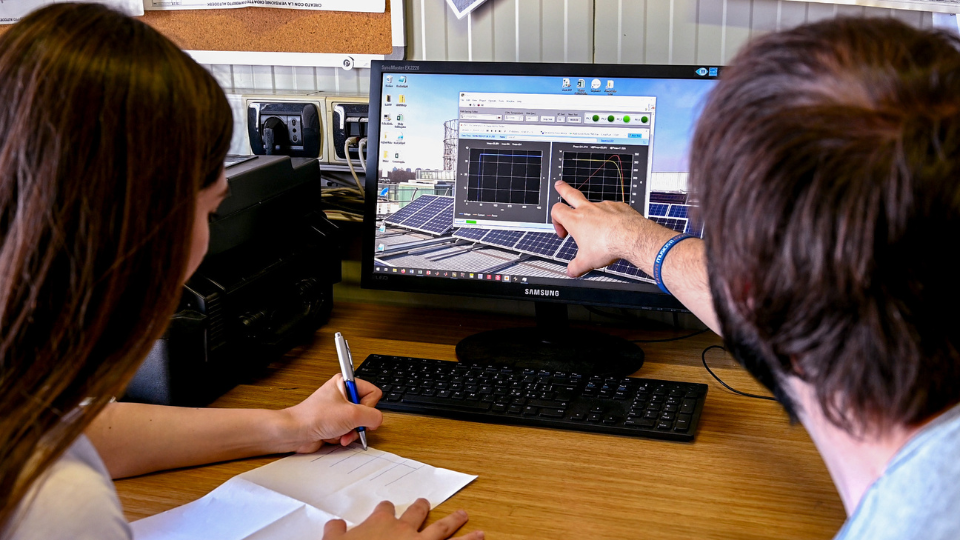
What was the path that led you here today?
I arrived at the Politecnico about twenty years ago.
During my PhD, I went to the Netherlands to work on a project on hydrogen production. That experience led me to discover the beauty of international collaboration. With Dutch colleagues, we started writing European projects, and there I appreciated the excitement of working on projects involving multiple research centres and people from all over the world, with the freedom to explore innovative solutions without the pressure of having to obtain immediate results.
Throughout my career, I have been fortunate to build and manage research teams, taking technologies from the laboratory to large-scale applications. At the same time, I have always been fascinated by solar energy, which I consider capable of responding to global energy needs. In particular, I have been working on optimising photovoltaics, trying to improve its performance, even though, to date, it is still not economically competitive with other energy sources.
When did you start working on European project proposals in the area of concentrating solar power?
It was 2016, I focused on advanced energy cycles. The first proposal was funded in 2019, and the desalination project arrived shortly afterwards: the latter gave me the opportunity to collaborate with several international partners.
It has been an interesting journey, made possible by commitment, perseverance and passion, not to mention a bit of luck.
What has this project given you?
I can say that this job has made me grow a lot, both professionally and personally.
As a coordinator, I often found myself in a managerial role, also dealing with the international affairs offices offering these collaborations. The legal and bureaucratic aspects are not easy to handle, but they add an interesting dimension to my work.
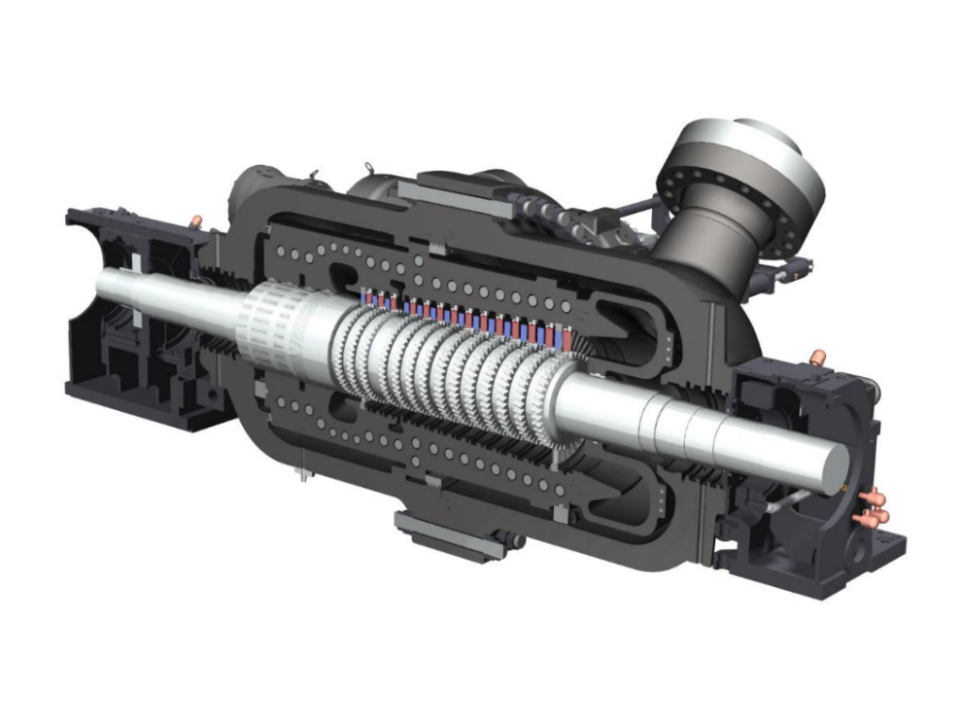
So, would you recommend a path like yours to a young researcher?
If a young researcher is passionate about research and wants an international experience, I would certainly recommend they choose a similar path. It is a highly rewarding journey, both professionally and personally.
In a global context where sustainability seems to be losing more and more importance, due to political and economic dynamics pushing other interests, how do you see the future of research into renewable energy? Is it more essential than ever to continue exploring this area?
In the past, sustainability has often been confused with environmental sustainability, focusing almost exclusively on the latter, while neglecting the social and economic dimensions.
Take, for example, the decision to ban the manufacturing of combustion cars from 2035. It is a measure that, although justified by environmental requirements, has not taken into account the impact on industry. If there are no companies that can make the transition, an entire part of the European economy is at risk of collapse.
How complex is it to reconcile these different areas?
Today we are reflecting on how to integrate economic and social sustainability, always keeping in mind that people need a job, a salary and a decent life. Although we are experiencing some environmental setbacks, as Europe we are still leading the way in many areas.
Having said that, the goal in research is to find solutions that are not only environmentally sustainable, but also economically feasible, trying to balance these two aspects in the best way possible.
As a researcher, I am well aware that this is not an easy challenge: if it were, we would have overcome it a long time ago. And that is precisely why we work every day to discover something new, rather than give up.
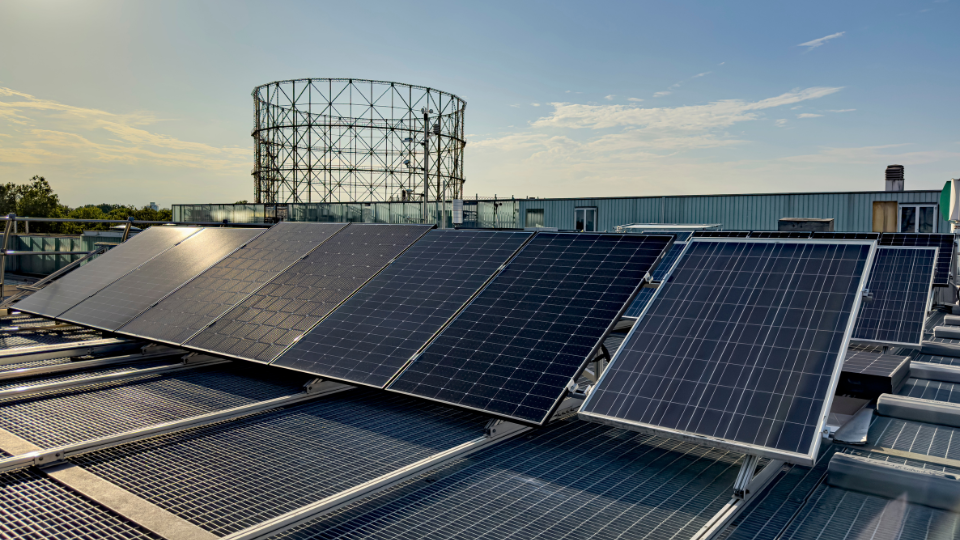
In view of this situation, funding and political priorities are likely to shift elsewhere. How is your research group experiencing this phase? Do you have concerns about the future of the funds and your business?
This is a question we are asking ourselves. We recently met as a group to analyse the new European tenders, and we are noticing a change of course. More and more space is being given to artificial intelligence and emerging technology sectors, while research in the energy sector is shrinking.
Over the years, our group has grown about 10 times. This was made possible by Italian government and EU funding as well as support from sustainable transition industries. We now see the risk of shrinking resources, so we are looking at how we could reposition ourselves if necessary, while maintaining our goal of increasing sustainability for the same product.
If you could give us a forecast, how do you think the direction of energy research will change in the future?
I believe that the situation in the energy field will be monopolised by photovoltaics and wind power for the next decade. They are the two most cost-effective technologies and are standardised as mass products. I think it is complicated that there are such investments that one can focus on something else.
The European Union, as a practice, funds technologies up to TRL7, Technology Readiness Level 7, which means that it allows the prototype to be tested in a real environment. Then there can be funding, so-called innovation funds, which give support to take the product to commercial level; but this is not non-reimbursable funding, the risk is very high. And the current socio-political-economic situation is not such as to encourage companies to take risks.
And one cyclically returns to the subject of nuclear power…
Yes, in Europe and all over the world.
The price of uranium has tripled in recent years because many nations are expected to go the nuclear route again. One of the major limitations of this technology, apart from waste management, is the time required to build a plant, for which it takes 7 to 10 years
This is a recurring, cyclic topic because it is driven by political visions. Often, to distinguish themselves from their predecessors, politicians aim for changes from the past. This negatively affects research because in this area you have to provide funding guarantees and time for the technologies to mature; suffice it to say that the photovoltaics we buy today took 40 years to become commercial and it took very large investments to make it competitive.
Thank you, Professor. One last question: is there a book or film you would recommend to explore these themes in a different way?
On the subject of sustainability, I like to mention the documentary ‘The Farm of Our Dreams’. It tells the story of a couple trying to create a sustainable farm in California. It is excellent food for thought on the challenges of sustainable living.
